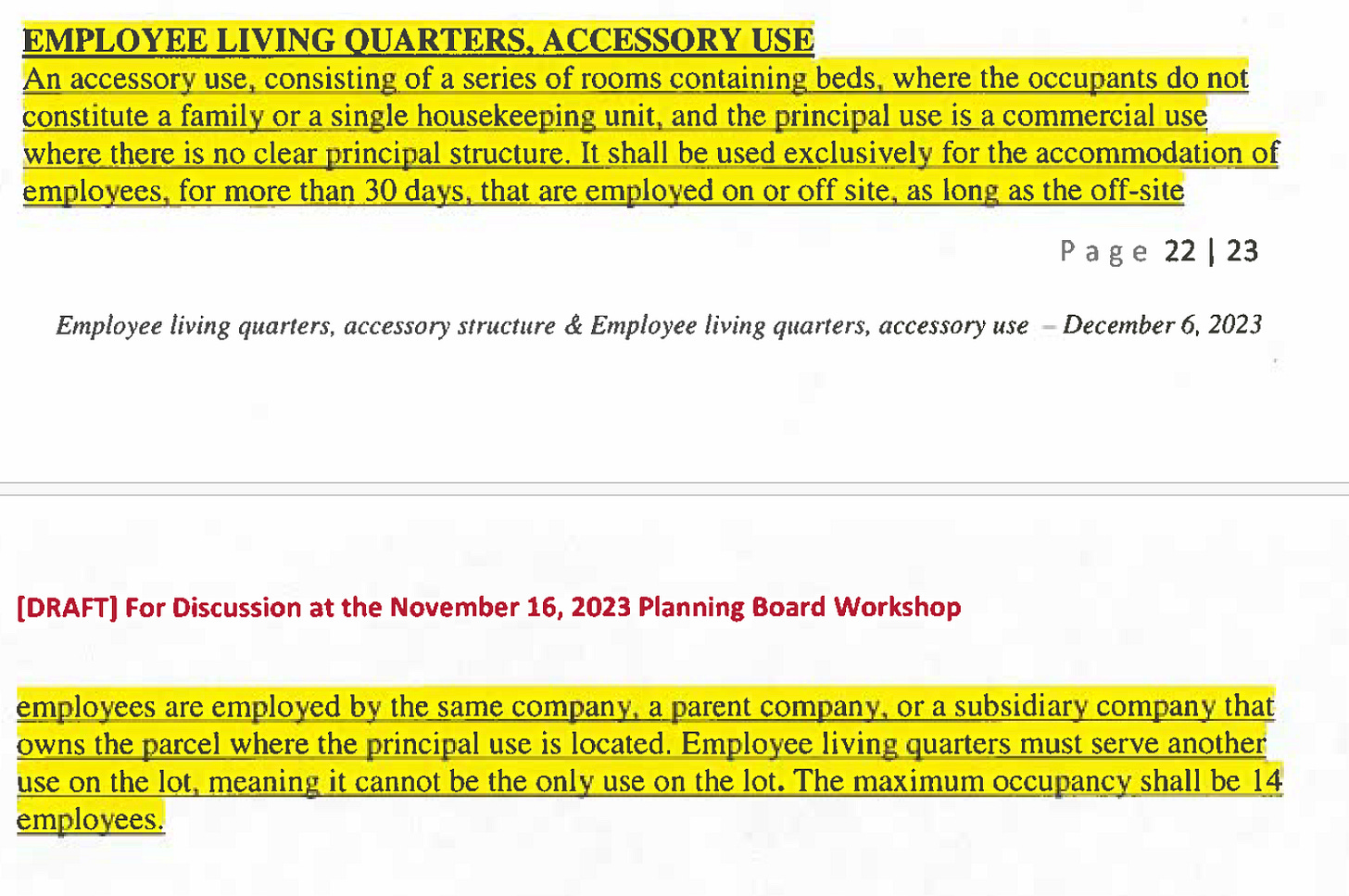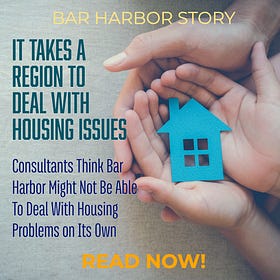Will State Housing Program Help Bar Harbor Housing Woes?
Planning Board workshops potential land use ordinance amendments
BAR HARBOR—The Planning Board held an hour-long workshop on three potential land use amendments that will likely go before the voters in June. The board will hold a hearing on the amendments on December 6. The workshop touched on an amendment to allow employee living quarters in rural areas, changes necessary to adopt to the state’s LD 2003 “Housing Opportunity Program” and how the town’s Design Review Board works.
EMPLOYEE LIVING QUARTERS LAND USE ORDINANCE AMENDMENT
This amendment would allow employee living quarters in rural areas. In order to accommodate the board’s suggestions about maximum size and number of parking spaces, Housing and Community Planner Cali Martinez said, “It went from a 10-page document to a 23-page document based on those changes,” Martinez said.
CHANGES INCLUDE:
Planning Director Michele Gagnon said that the phrase “ELQ-Accessory Use” has not been run by Code Enforcement Officer Angela Chamberlain yet, so that language may still change. This is a new definition for employee living quarters specifically in the areas outside downtown Bar Harbor.
Planning Board Secretary Elissa Chesler asked if there was a reason for only allowing one structure on each site. Martinez said that there were concerns about limits for water capacity and that staff worried about potential pushback about scale if there were not limits.
Gagnon said that when presenting amendments to voters, it’s more successful to take one bite at a time at change. The original ELQ language only passed by 1%, Martinez said.
The board discussed potentially how small cabins and permanent structures would allow people to develop incrementally rather than only allowing employee living quarters in that district to be built as one building.
“The opportunity is in small, off-site, prebuilt structures,” Chesler said.
Planning Board Chair Millard Dority said the Planning Board has played a very lowkey role in the land use support in the community. “I think we could be a big help with that,” Dority said. “We own a bit of responsibility—maybe a large responsibility—that these things pass.”
Gagnon suggested seeing how people respond to the total limit, keeping it to 14 people per building, and also seeing how people respond to it being in multiple structures with that same cap of 14 people total.
Chesler said currently there has been no public comment concerned about size.
HOUSING OPPORTUNITIES LAND USE ORDINANCE WARRANT AMENDMENT
The board also discussed the state mandated changes to promote affordable housing, LD 2003. Those changes would also go before the voters in June.
According to the state’s website, about P.L. 2021, ch. 672 (LD 2003), An Act To Implement the Recommendations of the Commission To Increase Housing Opportunities in Maine by Studying Zoning and Land Use Restrictions,
“LD 2003 focuses on removing regulatory barriers to increase housing production in Maine, while preserving municipal ability to create land use plans and protect environmental resources. This legislation requires municipalities to create or amend local ordinances to allow for:
Additional density for affordable developments in certain areas;
Multiple dwelling units on lots designated for residential use; and
One accessory dwelling unit located on the same lot as a single-family dwelling unit in any area where residential uses are permitted.”
During this specific town meeting, the board members focused on whether or not to prohibit VR-1s (vacation rentals where the owner lives on site as a primary residence) in the new rules. The discussion centered on whether or not allowing one of the dwellings to be a VR-1 would be an incentive to build housing on a lot.
VR-2 is prohibited everywhere in the changes.
Chamberlain had said at an earlier meeting that it would be hard to track vacation rentals if the use was not allowed. Gagnon has sent the language of the proposed draft amendment to the town attorney to see if there are any issues with the language of the town’s proposed changes.
The maximum number of VR-1s on a lot is two, Dority said, “So even if you build four, the maximum rentals would be two. If you build three, you could build two.”
According to Gagnon, Chamberlain pulled 10 files in Town Hill lots and looked at the difference of the land owner’s ability to do more under the potential changes and legislation.
Seven lots had no benefit from the legislation. Only in three cases could land owners do more. “It doesn’t really do that much,” Gagnon said.
A recent housing study released by the state found that to address housing needs, between 76,400 to 84,300 homes needed to be built by 2030. This is across the state.
According to MaineHousing to afford a median home in Maine in 2022, the owner’s income needed to be $106,225. Bar Harbor is estimated as needing about 616 year round dwellings by 2033.
Planning Board member Joe Cough wondered if they took away the incentive of allowing a VR-1, it would stop the other three dwellings being built for affordable housing or just simply housing. He also said he did not know the answer to the question he posed.
The board decided to propose the change without allowing any vacation rentals as a use, which means the summary language below will change as well as the proposed amendment. Then, in six months to a year, it seems as if no one is building, they could propose another new amendment that would allow VR-1s.
DESIGN REVIEW LAND USE ORDINANCE AMENDMENT.
There were small tweaks to the Design Review Board’s portion of the Land Use Ordinance, such as striking a reference to T-111, a composite flat sheet product, and a section about standards in the Town Hill Business District. The Design Review Board’s overlay map was also updated.
There was no public comment on any of the items discussed at the workshop.
LINKS TO LEARN MORE
https://www.townhallstreams.com/stream.php?location_id=37&id=56093
https://www.barharbormaine.gov/282/Planning-Board
It Takes a Region To Deal With Housing Issues
BAR HARBOR—Can Bar Harbor somehow make an additional 616 rental units by 2033? And an additional 94 owner-occupied housing units? Those are questions that the Comprehensive Planning Committee discussed Wednesday night as the consulting group RKG presented a housing analysis that is meant to inform Bar Harbor’s 10-year-plan for the future.
Where Have All the Starter Homes Gone
Bar Harbor Far From Alone in Housing Crunch










